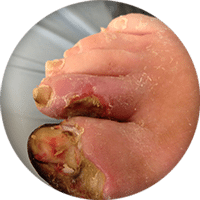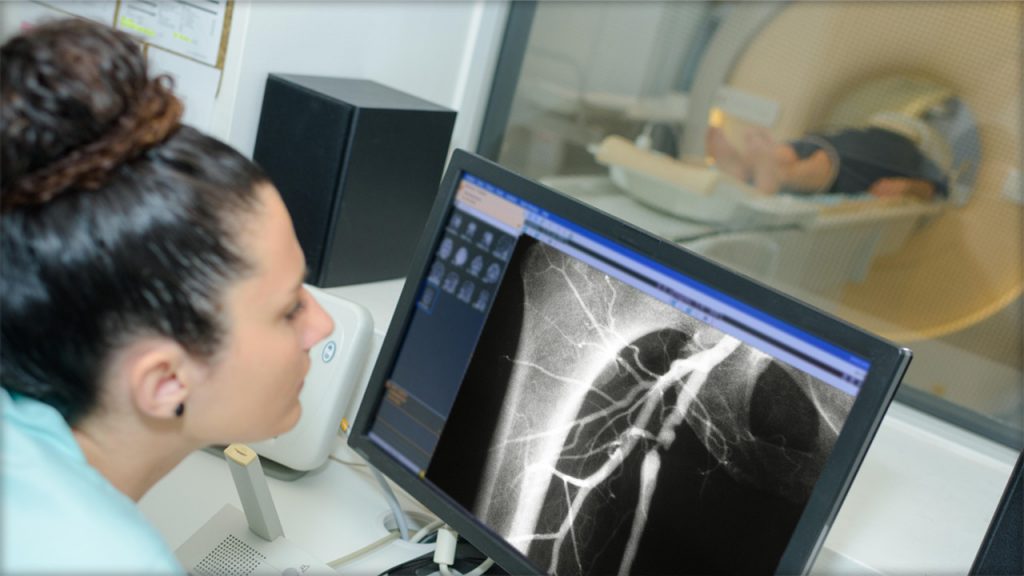Critical Limb Ischemia (CLI)

A person with peripheral artery disease (PAD) may have little to no symptoms initially, but over time, may develop critical limb ischemia (CLI). CLI is an advanced stage of PAD, this progressive condition occurs when there is significant blockage in the arteries, which reduces blood flow to areas such as the legs and feet.1 The lack of blood flow can lead to severe pain, even when at rest during the night, non-healing wounds below the ankle, gangrene and ultimately limb amputation. Without proper and immediate treatment, patients with CLI may risk amputation and related complications.2
Symptoms of PAD
PCertain risk factors are associated with PAD, such as smoking, older age, and having certain diseases and conditions, such as diabetes, high blood pressure, history of stroke and coronary heart disease.4 While some patients with PAD experience mild to no symptoms, others may experience exercise pain (claudication), pulse changes, skin temperature changes, pain at rest and non-healing wounds. PAD symptoms include:5

Pain at Rest
Severe pain may occur while sleeping or with little to no movement.

Absent Pulse
Weak pulses that may be hard to find in the legs or feet.
Mild Symptom

Moderate Symptom

Advanced Symptom

Severe Symptom

Non-healing Wounds
Sores or wounds below the ankle on the toes or feet that won’t heal or aren’t healing well.
Non-healing wound image courtesy of Dr. Raghu Kolluri.
CLI Diagnosis and Treatment
Diagnostic Procedures If you think you may have CLI, it is critical to seek help. While the diagnosis is similar to PAD, treatment procedures may be longer and more extensive than for PAD.4 To re-establish blood flow to the foot, treatment possibilities include: atherectomy, angioplasty with stent placement or Bypass Grafting. Appropriate wound care is required for any non-healing wounds. Photos of Diagnostic Procedures
Videos of Diagnostic Procedures
Ankle-brachial Index at Rest
A quick, non-invasive index test that measures and compares the blood pressure at the ankle to the blood pressure at the arm.
CLI Treatments
Photos of CLI Treatments
Videos of Diagnostic Treatments
Atherectomy
A procedure that uses a special catheter to remove plaque build-up from a blood vessel. The result is increased blood flow to the peripheral tissue.
CLI Patient Stories
Critical limb ischemia can be devastaing if not treated right away. But there is hope. Take the step and learn what it’s like to have CLI from patients and why it’s important to get help.
More Patient Stories
PAD Stories

Many PAD patients experience a gradual decline in activity level and quality of life which can go unnoticed for years. Learn about Joe’s suspicions and his perseverance to seek help.
DVT Stories

Deep vein thrombosis (DVT) can strike quickly with little notice. Learn more about Reid’s condition and his road to recovery.
DVD Stories

Patients with deep venous disease (DVD) often go through years of suffering with worsening symptoms and other underlying conditions. Learn about Melanie’s path to uncovering an underlying condition and her road to restoring her health.
Helpful Resources

PVD Doctor
Discussion Guide
Get helpful tips and advice on how to talk to your doctor about a PVD screening.

CLI Brochure
Find out more information on CLI by downloading this helpful brochure.
Third-Party Resources
Helpful Websites
Blogs
Find a Doctor that Treats CLI
Consult your doctor to learn more about CLI and how to maintain your health. You can also use our Doctor Finder tool below to find a specialist near you.
This tool is not inclusive of all specialists. Consult with your insurance provider to find specialists that are covered within your network.
Are You a Healthcare Professional?
Find out how to register your practice with us.
1. Peacock et al. “The Incidence and Health Economic Burden of Ischemic Amputation in Minnesota, 2005-2008.” Prev Chronic Dis 2011;8(6):A141. 2. Varu et al. “Critical limb schema.” Journal for Vascular Surgery. Volume 51, Issue 1, Pages 230–241. Jan. 2010. 3. “Critical limb ischemia.” UC Davis Vascular Center. n.d. 4. “Critical Limb Ischemia (CLI).” Division of Vascular and Endovascular Surgery. UCSF. n.d.
Disclaimer
The opinions and clinical experiences presented herein are for informational purposes only. Individual results may vary depending on a variety of patient-specific attributes and related factors. Dr. Raghu Kolluri has been compensated by Philips for his services in preparing and providing this material for Philips further use and distribution. We offer links to third-party websites that may be of interest to our website visitors and in no way, represent any affiliation or endorsement of the information provided on those linked websites. These links are provided solely for your convenience and to assist you in learning more information on this topic. However, Philips does not control, endorse or guarantee the accuracy of the information contained on the linked sites. In addition, Philips makes no representations or warranties of any kind with regards to any third-party websites or information contained therein. If you have any questions or concerns about the information on the linked third-party websites, please contact the third-party websites directly.














